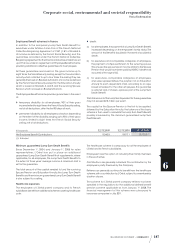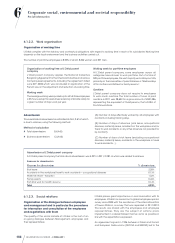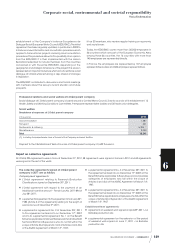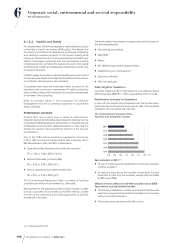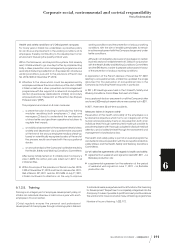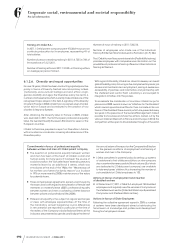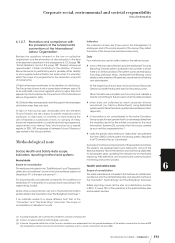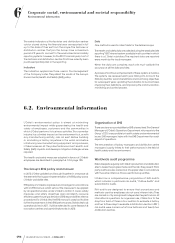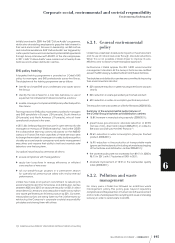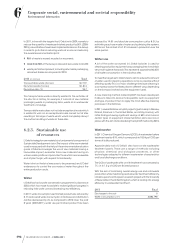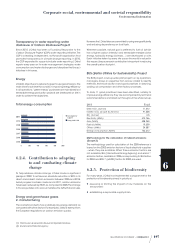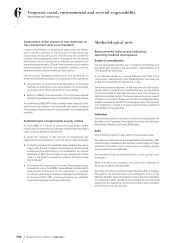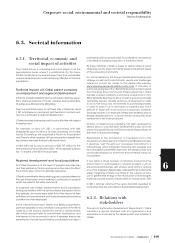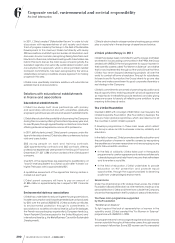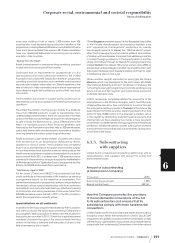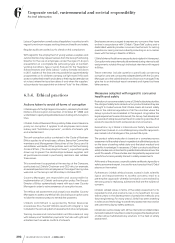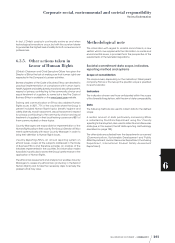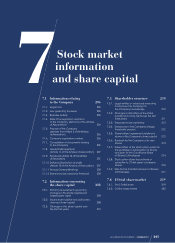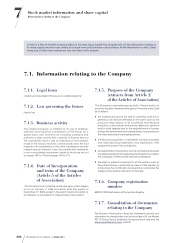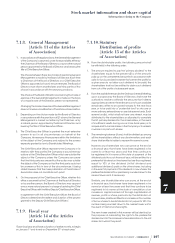Loreal 2011 Annual Report Download - page 199
Download and view the complete annual report
Please find page 199 of the 2011 Loreal annual report below. You can navigate through the pages in the report by either clicking on the pages listed below, or by using the keyword search tool below to find specific information within the annual report.
197REGISTRATION DOCUMENT − L’ORÉAL 2011
Corporate social, environmental and societal responsibility
6
Environmental information
Transparency in water reporting: water
disclosure of CarbonDisclosure Project
Since 2010, L’Oréal has been a Founding Responder to the
Carbon Disclosure Project
(CDP) water reporting initiative. The
CDP is a leading, independent, not-for-profit organisation that
promotes transparency in climate change reporting. In2010,
the CDP expanded its scope to include water reporting. L’Oréal
reports every year on its water management strategies, water
consumption and water discharges and describes the Group’s
initiatives in this area.
Energy
L’Oréal’s objective is to reduce its greenhouse gas emissions. The
main driver to achieve this consists in improving energy efficiency
in all operations: “green energy” purchases are maintained but
renewable energy production projects are developed on site in
order to achieve the objectives.
Total energy consumption
400
2009
0
2007
2006
2005
200
2008
600
2010
800 1,000
Consumption for
1 000 PF
Energy 1,000 * kWh
2011
6.2.4. Contribution to adapting
to andcombating climate
change
To help address climate change, L’Oréal made a significant
pledge in2009: to achieve an absolute reduction of 50% in its
direct and indirect carbon emissions between2005 and2015.
Good progress has been made and in2011, carbon emissions
have been reduced by 29.8% as compared to2005. The change
in the scope taken into account satisfies the GHG Protocol rules.
Energy and greenhouse gases
inmanufacturing
The cosmetics industry has a relatively low energy demand as
compared with other sectors. For example, L’Oréal is exempt from
the European regulations on carbon emission quotas.
However, the L’Oréal sites are committed to using energy efficiently
and reducing dependency on fossil fuels.
Wherever possible, natural gas is preferred to fuel oil (which
has a higher carbon intensity) and renewable energies (solar
energy, hydraulic energy, biomass…) are developed on site.
Each initiative taken by every site across the world is valued in
this respect, because each contribution is important in reducing
the overall carbon footprint.
BUS (Better Utilities for Sustainability) Project
The BUS project, a Group-wide pilot project run by operations
managers, draws on expertise from across L’Oréal to identify
methods, technical solutions and good practices in cleaning,
cooling, air compression and other factory processes.
To date, 11 good practices have been identified, notably to
improve energy efficiency; they are accompanied by technical
recommendations and rolled out throughout the whole Group.
2011 Total
Direct CO2 (tonnes) 71,012
Indirect CO2 (scope2) (tonnes) 91,558
SO2 (tonnes) 6.5
Electricity (MWh) 373,756
Gas (MWh) 328,960
Fuel oil (MWh) 19,309
Others (MWh) 24,587
Energy consumption (MWh) 746,612
Methodology for the calculation of indirect emissions
(Scope 2)
The methodology used for calculation of the 2005 reference is
based on the 2003 emission factors of local electricity suppliers
– when they are available. When these emission factors are
not available, IEA (International Energy Agency) and eGrid (1)
emission factors, available in2006, corresponding to IEA factors
for 2003 and EPA(2) (eGRID ) factors for 2000, are used.
6.2.5. Protection of biodiversity
For many years, L’Oréal has implemented a programme for the
protection of biodiversity aimed in priority at:
♦assessing or limiting the impact of raw materials on the
environment;
♦establishing a responsible supply chain.
(1) The Emissions & Generation Resource Integrated Database.
(2) Environmental Protection Agency.


